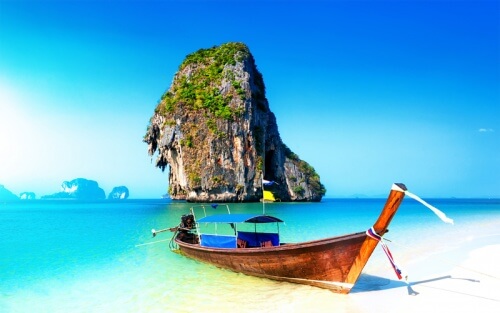
Historic reasons to visit Famagusta
Cyprus is a wonderfully diverse island with plenty to see and do. This small island has been influenced by many cultures and religions over the past centuries. Not surprisingly, its history is a speckled mixture of Hellenic, English and Ottoman origins. Its eventful past is still obvious in many parts, no more so than the north-east, which is officially called Turkish Republic of Northern Cyprus (TRNC) If you’re going to visit Cyprus with Direct Traveller, then Famagusta should certainly be on your travel itinerary as it is steeped in ancient and contemporary history.
The knock-on effect of the events of 1974 is that the once glamorous playground of the rich and famous (remember Brigitte Bardot and Elizabeth Taylor?) became a ghost town. Famagusta was, at its height, a sun-soaked haven and a millionaire’s paradise. Now, however, the famous resorts in Famagusta are deserted, while rows of tower-block hotels pose as an austere reminder of the area’s heyday. But don’t let that stop you – there’s plenty more to do in Famagusta besides.
Famagusta is still a beautiful, walled mediaeval city. In 2008 and 2010, the city was added to the World Monuments Watch, such is its architectural richness. Venetian fortification surrounds the old city, which is one of the best preserved in the Mediterranean but even though you can visit many French Gothic and Byzantine buildings, many are in a state of disrepair. In fact, some of the damage on view dates back to the Turkish siege of the city in 1571 – you can still see cannon balls in the city walls of some of the buildings. While in Famagusta, stop off at Othello Castle, said to be the inspiration of Shakespeare’s work of the same name. This 14th century “impenetrable fortress” (as it was once known) was built by the Lusignans to protect Famagusta port against enemy attacks.
The stunning Cathedral of St Nicholas, which is now a mosque, as well as St George of the Greeks Church are definitely worth a visit. Indeed, there are many Christian churches scattered throughout that are reminders of the strong religious presence in the city. In 1291, Christian merchants fled from Palestine to Famagusta where they enhanced the city’s reputation for trade, while Crusaders also used Famagusta as an important staging post on their way to the Holy Land.
A must is the Salamis Ruins, an ancient city just 5 miles from the Famagusta city. This Roman city will take you back in time while you discover the gymnasium, Roman theatre, Roman Views, the ancient Water Meter, the Temple of Olympia Zeus and many more amazing artifacts.
- Famagusta Salamis Ruins
- Roman Theatre
- Roman Theatre
- Famagusta Salamis Ruins
- Salamis Ruins in North Cyprus
- Roman Artifacts
- Roman Artifacts
- Salamis Ruin Famagusta
- Salamis Top View
Famagusta was a prosperous city and remained so until the Ottoman navy invaded north Cyprus in 1570. From this point on, Famagusta changed irrevocably. The Ottoman Empire used the city as an exile home for political prisoners and let the once glorious architecture fall to ruin. They also banished all Christians to Varosha, situated outside the city walls. Today, Varosha is still a no-go area and is enclosed in barbed wire. I hope you enjoyed our historical breakdown of Famagusta and why we think it’s such an interesting and fascinating place to visit.
When visiting any of the historical points above we recommend to avoid the hottest part of the day and to also bring plenty of water and suncream. Famagusta is truly beautiful region in Northern Cyprus.
Have you been to Famagusta? If so what were your highlights and what would you recommend others to visit? Please discuss below.
https://www.directtraveller.com/blog/historic-reasons-to-visit-famagusta/https://i0.wp.com/www.directtraveller.com/blog/wp-content/uploads/2015/08/IMG_8797.jpg?fit=500%2C334&ssl=1https://i0.wp.com/www.directtraveller.com/blog/wp-content/uploads/2015/08/IMG_8797.jpg?resize=200%2C200&ssl=1Uncategorizedhistory of famagusta,north cyprus famagusta






















